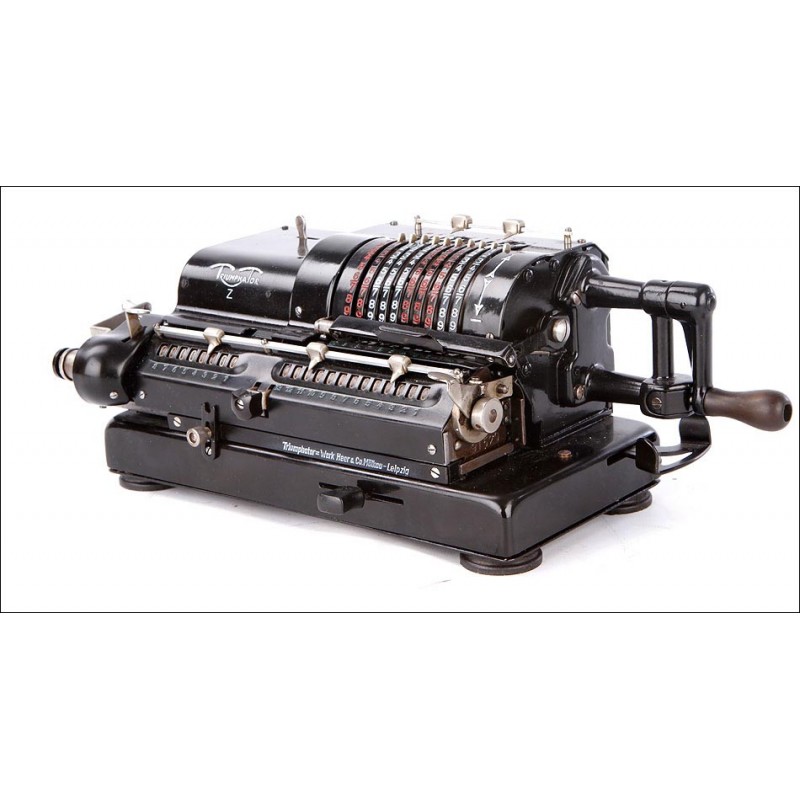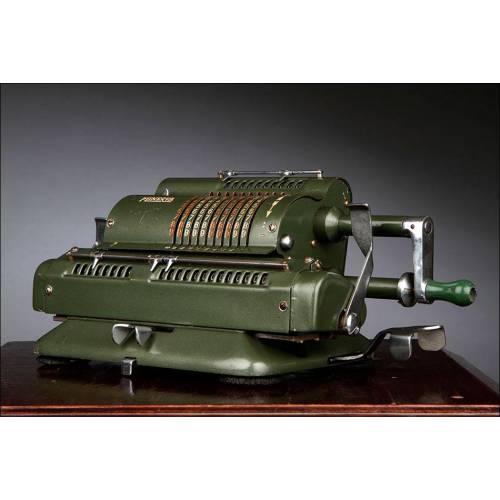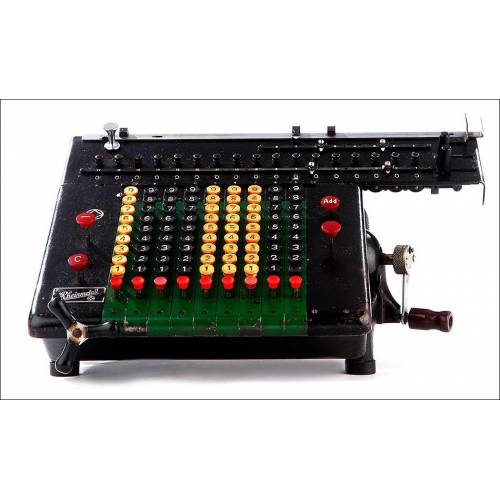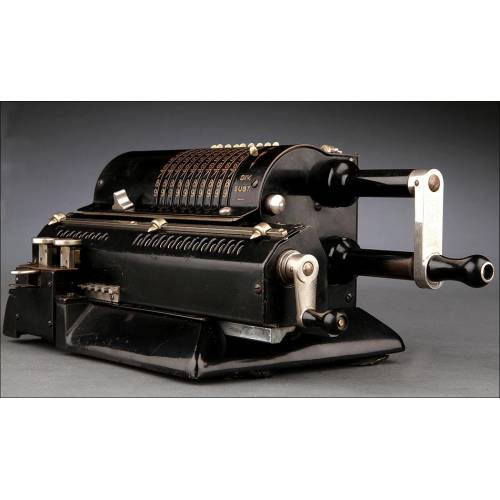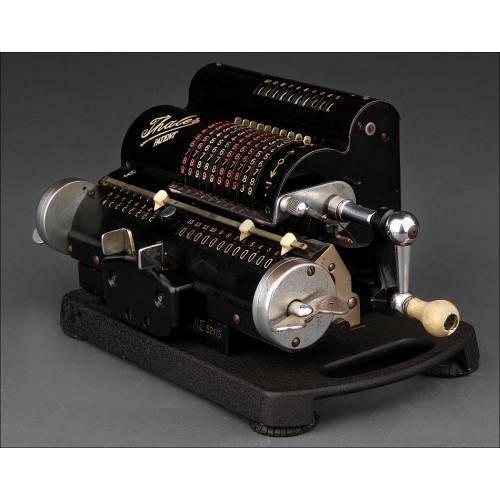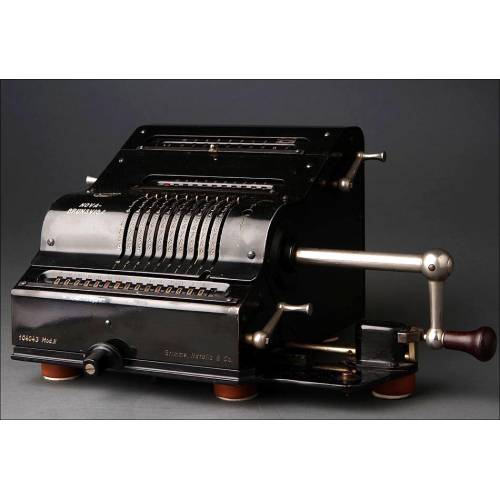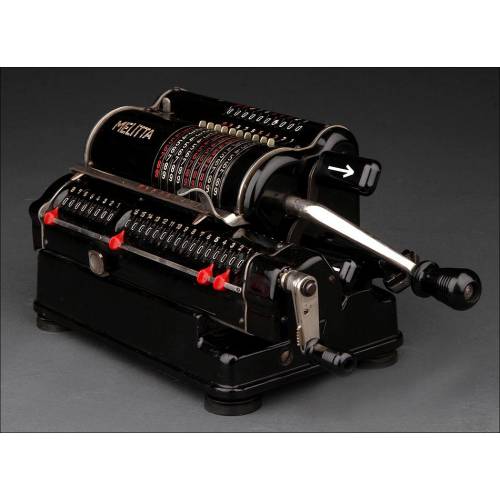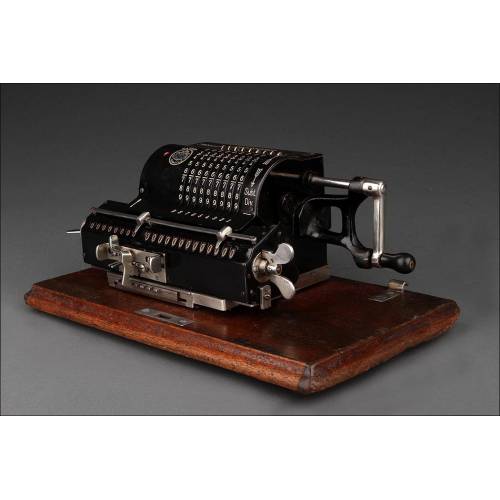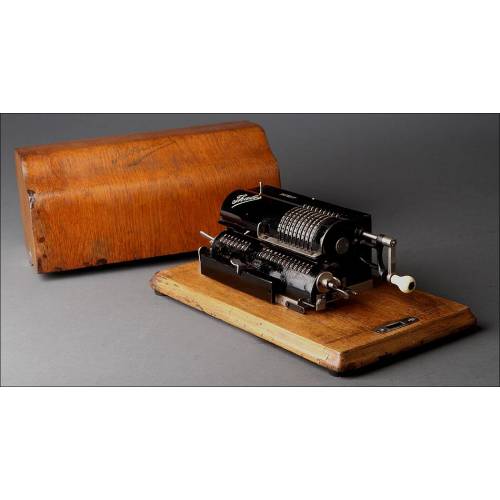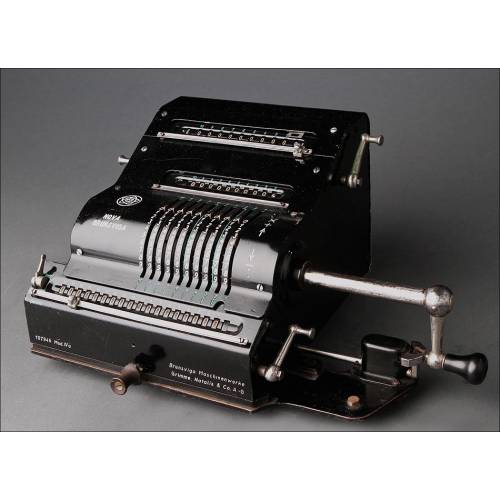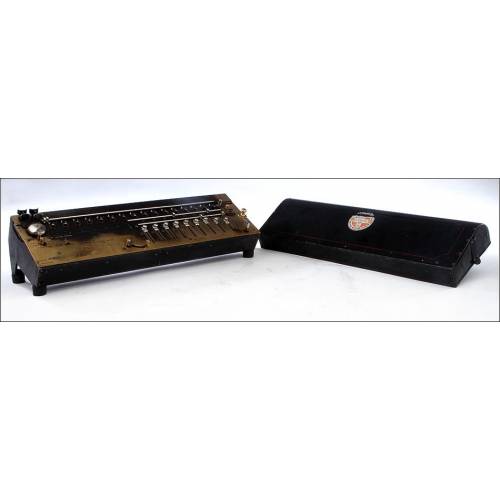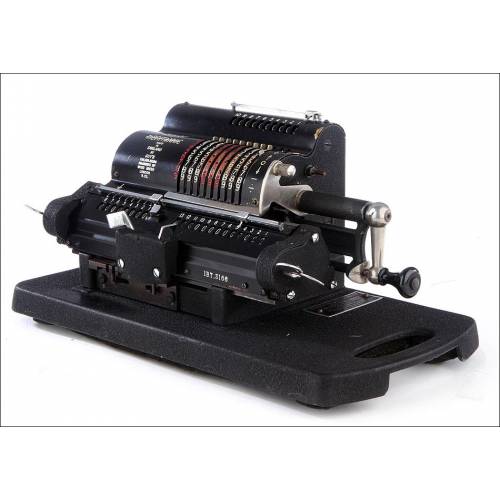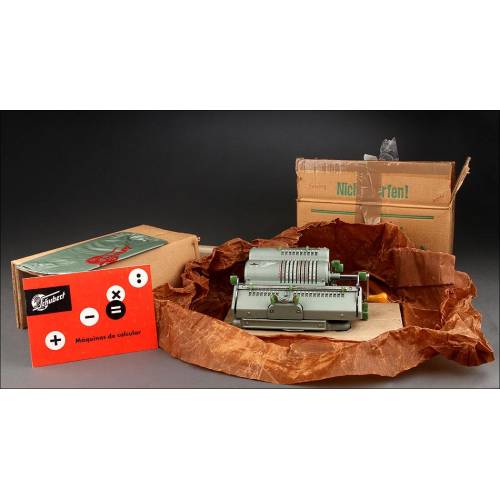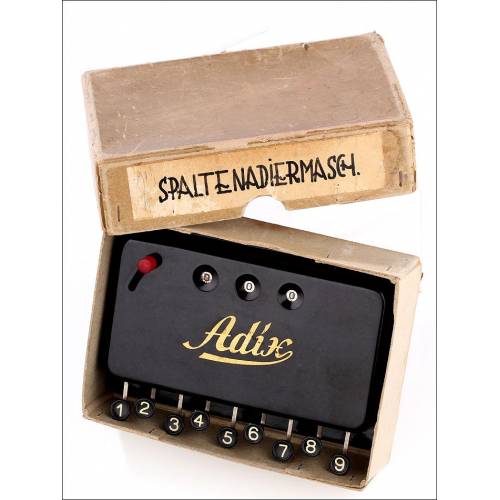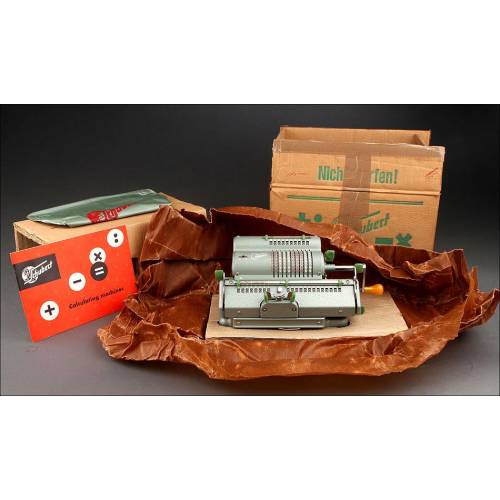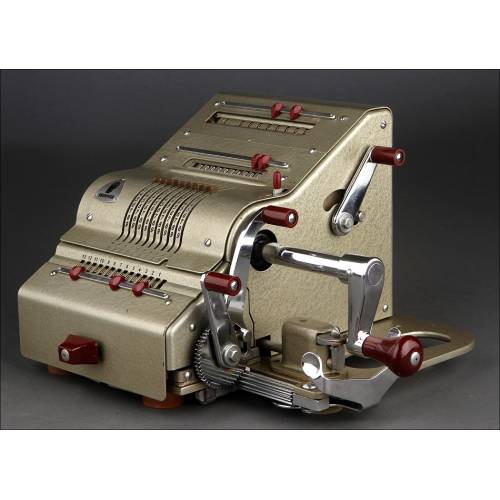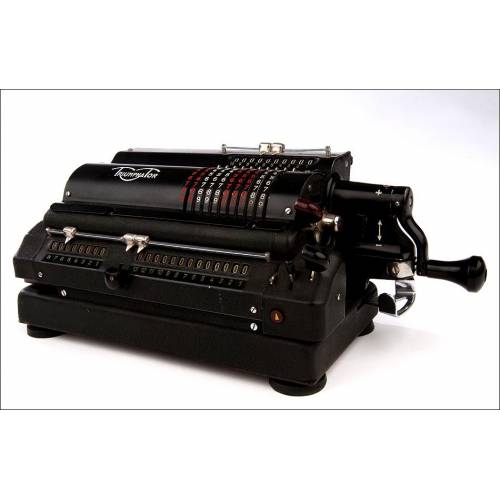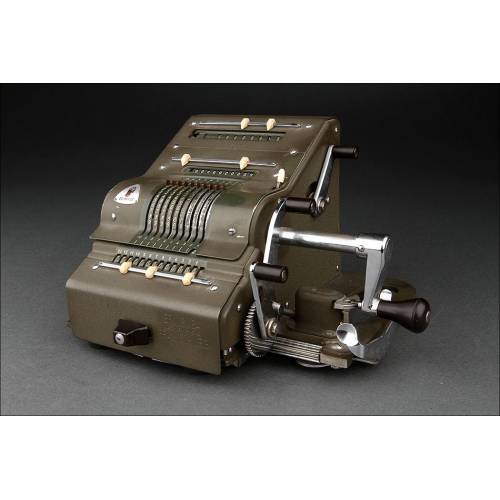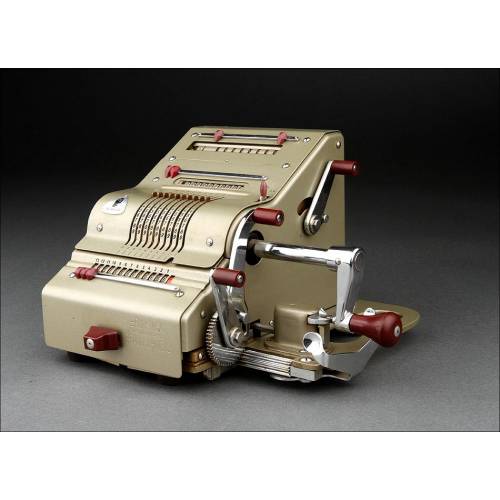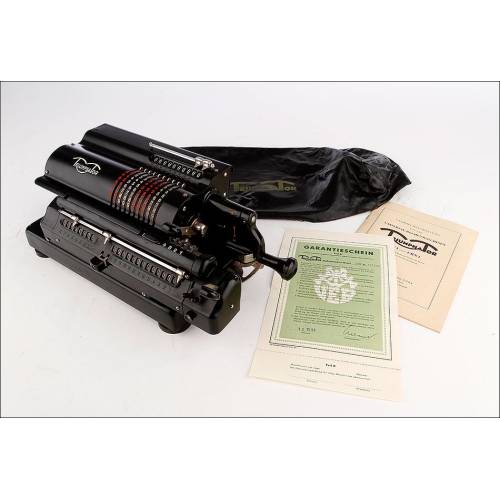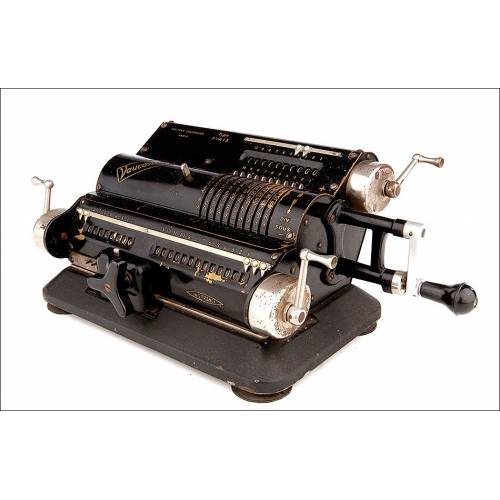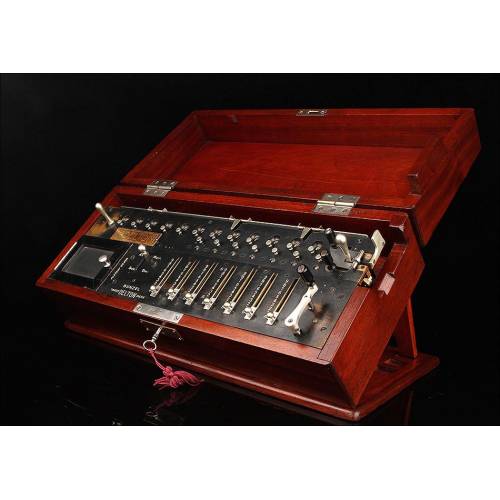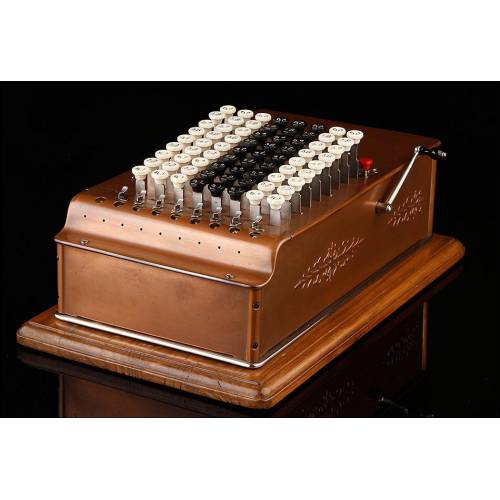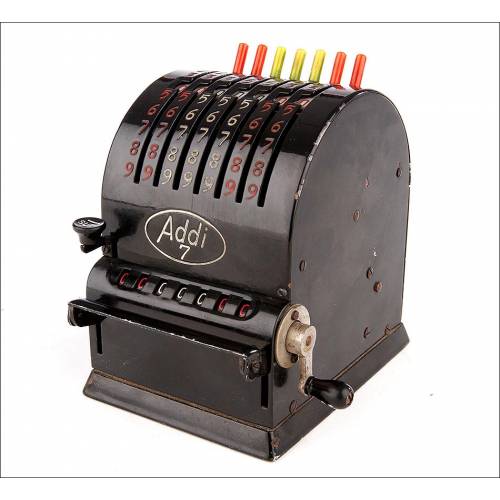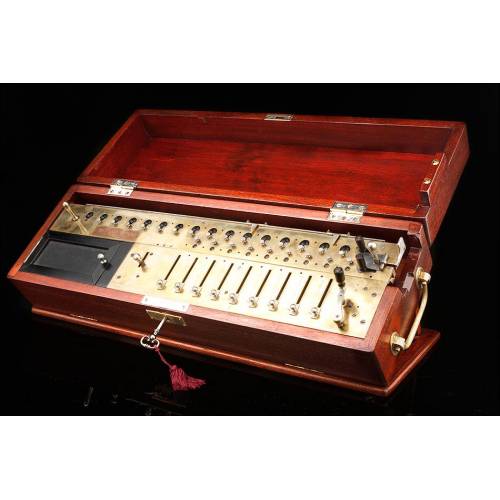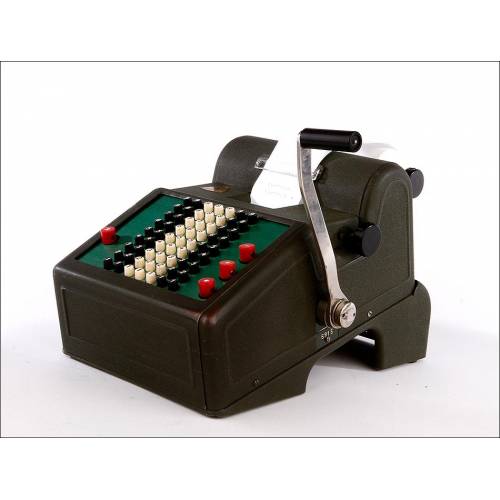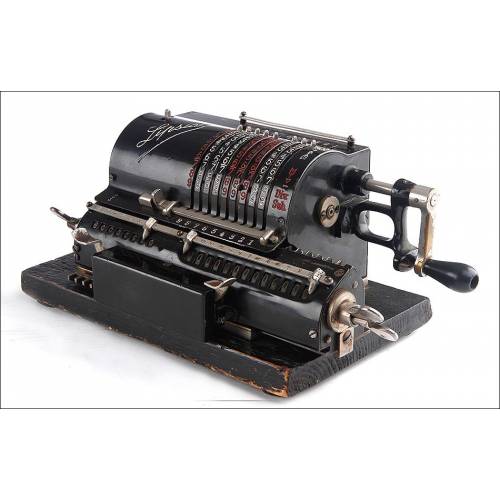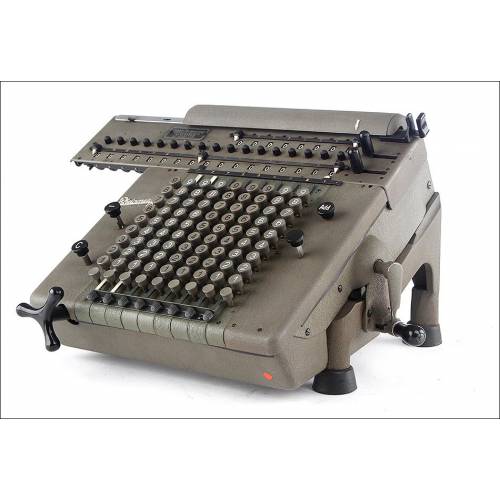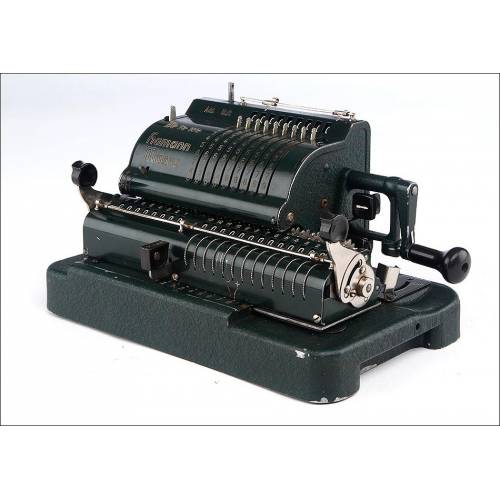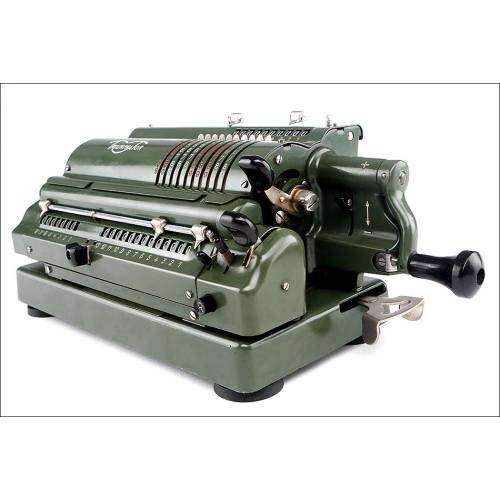B-699
Antique Triumphator Z Windlass Calculator in working order. Germany, 1930's
Superb Triumphator Z mechanical calculator in excellent condition. Works great.
Sold!
Striking Triumphator Z mechanical calculator made in Lepizig, Germany in the 1930s. This machine is a fascinating example of the quality, precise and beautiful design of the calculators produced in the first half of the 20th century. It is operated by a pinwheel mechanism and works perfectly, providing reliable and quick results. The calculator makes it possible to perform the four basic arithmetic operations, and it is a real pleasure to work with: all the levers, pointers and cranks move fluidly and softly. As we can see in the images, the calculator mounts a black-enameled metal case. The finish has been repainted and it looks shiny and even and so do the numbers and the decal, engraved in the metal and painted white and red. The chrome-plated component parts remain in amazing condition, with scarcely any sign of rust or wear. To the left of the digit levers we can see the calculators brand and model, TRIUMPHATOR Z, in white enameled lettering. On the right bottom corner we can read the manufacturing companys name and city of location: Triumphator = Werk Heer & Co. Mölkau Leipzig. This wonderful calculator will draw anyones attention on a great desk, where it will keep on providing exact results.Triumphator Calculators HistoryTriumphator, together with Brunsviga and Odhner, belongs to the 3 world- famous manufacturers of pinwheel calculators. The firm began in 1900 as a vacuum-tube company in Leipzig-Lindenau. In 1904 a mechanic from Brunsviga, Otto Holzapfel, entered the firm and then the calculator production started 1904 under the brand name Triumphator. As the first company world-wide, they introduced and made machines with 10s-carry mechanism in order to perform "faster multiplication". In 1912 Boleslaus Benas, another man from Brunsviga, joined. He became General Salesman and brought Triumphator to success. In 1930 the year-production of Triumphator was alike its competitor Brunsfiga. After WWII, 1946, the East Germany's government took control and the company produced calculators mainly for the Eastern Block. In 1965 the production (after 61 continuing years) came to an end.

